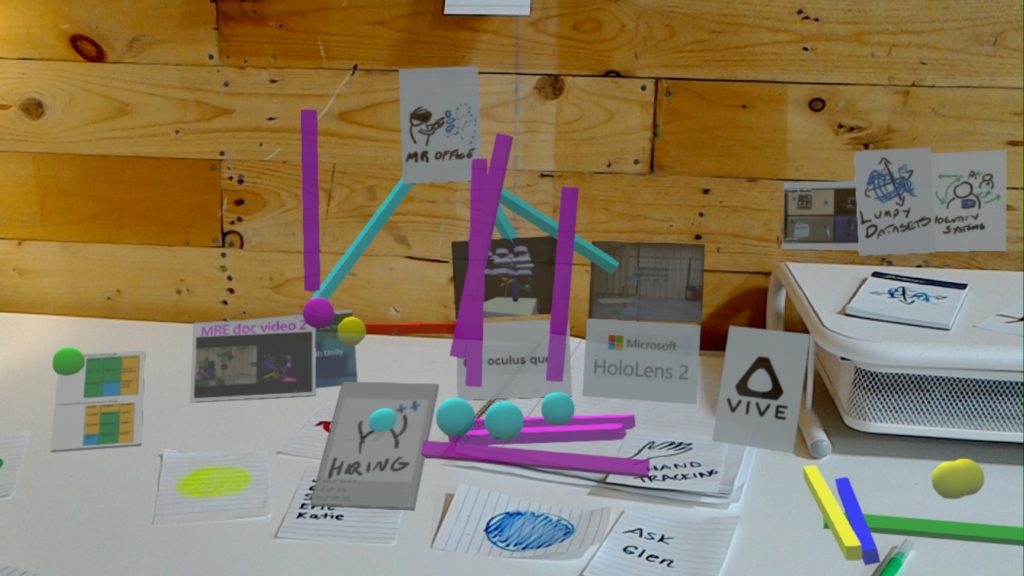What are meetings for? Specifically, what are meetings between geographically distant people enabled by technology for? Does the technology we choose for that coming together change the kinds of underlying purposes we can achieve?
It is part of the larger tech culture to, when possible, choose video calls over audio only. But when I speak to my family, my Mom or Auntie, it’s always audio only due to their preference for “phone” calls over “app” calls. With friends I prefer video first, but just like with conversations at work, we turn off our cameras if the connection is poor. Conversations had via both video and audio only can feel open and intimate or formal and structured. I can conduct an interview or wail to a friend. Rarely however do we make something together.
The purpose of communications technologies is, of course, to exchange messages, but messages also need to be created. In order to communicate when we are both geographically and temporally distant you can create a painting which I later look at or I can write a text which you later read. This is how much of current social media is designed. Create content, publish content, consume content. This creation/delivery loop is the goal of most meetings too. Slides made beforehand are presented during, then shared out afterword, sometimes with recordings attached. So, we have mostly mastered well thought out, pre-made, and packaged knowledge delivery without needing to be in the room together but what about the magic of expert musicians improvising sounds? What about the creative spark of designers mid prototyping session? How do we promote improvisation, and thus active creation, for teams of remote collaborators?
The above video documents one of our team’s meetings in a cross-R (meaning having participants in both VR and AR) environment and details a few of the ways the team improvises with simple functionalities like spatially repositionable cards and color-changing blocks.
For greater clarity let’s compare the experience documented in the video to other ways remote collaborators can work together currently. When working alone creating a deck requires forming data and knowledge into a communicative linear format. This process creates a sharable document but also helps clarifies our own thoughts and assumptions. Creating a deck with a remote collaborator means working in parallel within the same document but usually on separate slides. The same goes for documents. In my experience, contributors tend to work in separate sections, or wait until one contributor has finished in an area, and moved their cursor away, before making changes there. This side-by-side style of collaboration happens in cross-R as well, but because of the physical and spatial components there is little delay when switching between participants contributing to the same area. Intention communicated by body language, is silent in a blinking cursor. When Vi and I are standing side-by-side in AltSpace creating an office environment and setting up for a meeting our hand and head positions are tracked and transmitted allowing us to move fluidly around each other in real-time. When she sets a prop on a table and stands back to see if it feels right, I can easily nudge it into a new position which I feel better suits the task, all without verbal communication. Being able to quickly glean another intention melds our efforts and ideas into a more unified whole than I have experienced with the same collaborators creating slides decks where the finished product tends to reflect contributors having ownership over certain sections of the presentation. But quick intention gathering also seems to lead to better conversational fluidity. Working with the same collaborators over many different mediums I’ve noticed that the dimensional body language of VR and AR also seems to lessen the extent of things like accidentally talking over each other which are very common in video calls.
As we experiment with more functionalities for, and methods of, working together in cross-R it will be interesting to see how different working modes support or interfere with fast unintentional giving and receiving of intention, if it is a hand/body skill which can be developed consciously, and how overlapping spatial and flat screen modalities might lend ease of understanding a collaborators intention to technologies that were originally designed as single player experiences, like Word and PowerPoint, but later retrofitted to enable remote teams.

